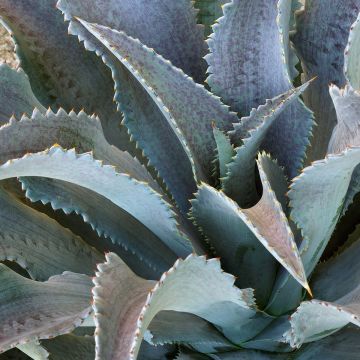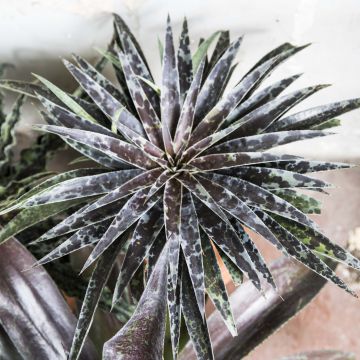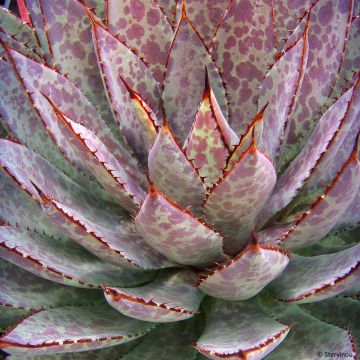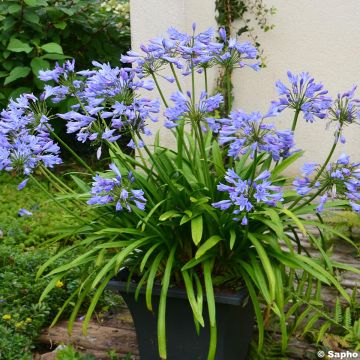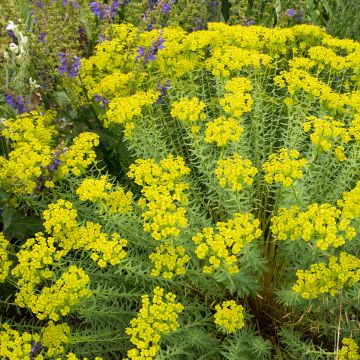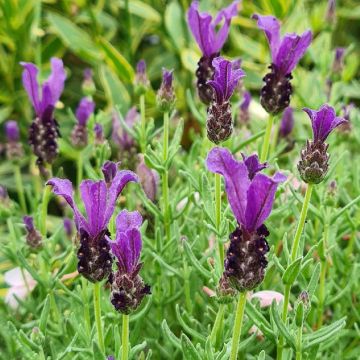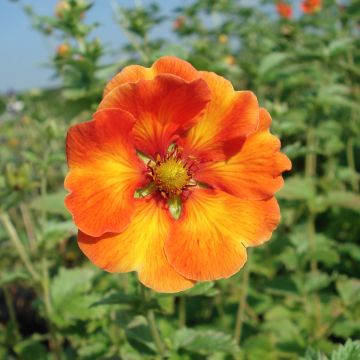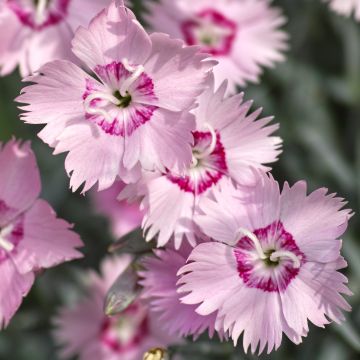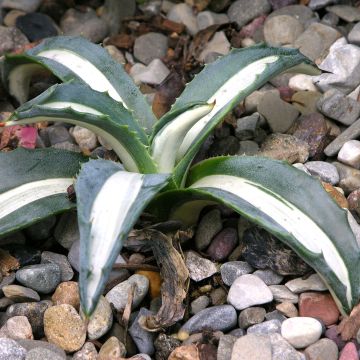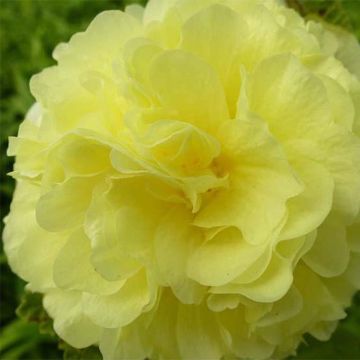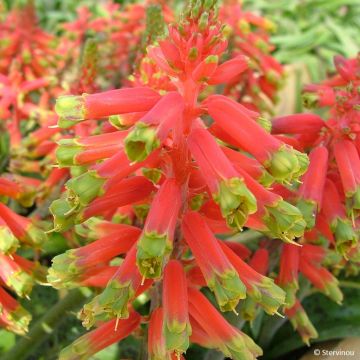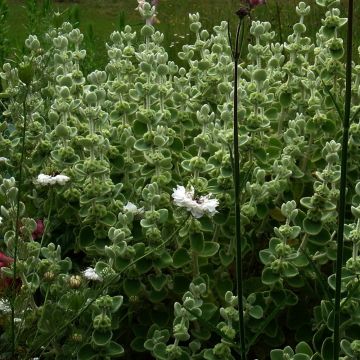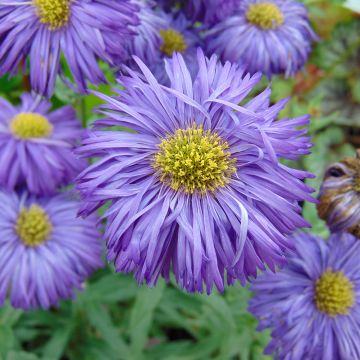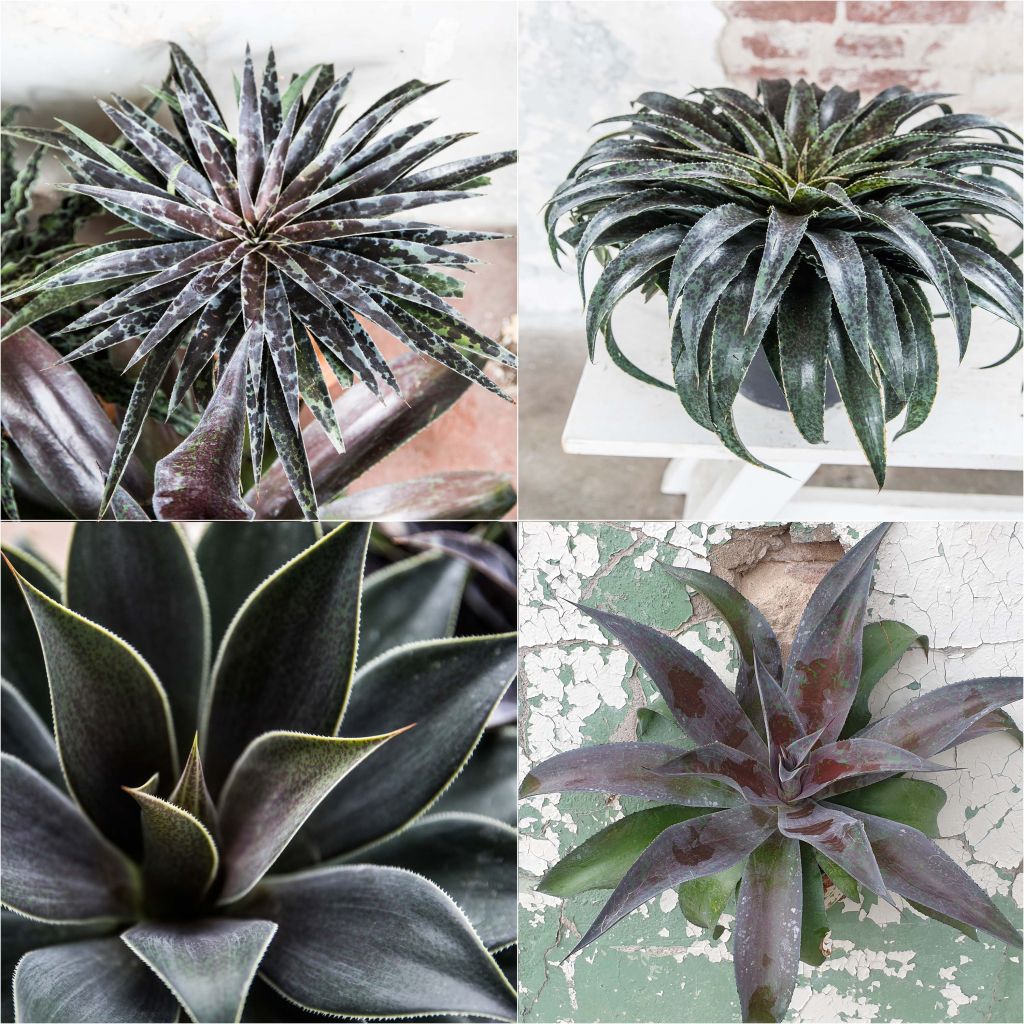

Collection of 4 mangaves
Collection of 4 mangaves
(x) Mangave Mangavé® Redwing , Pineapple Express,Lavender Lady, Mission to Mars
This neck is very beautiful and the young plants already have a nice size. The delivery was quick and in line with my expectations.
Sylvie, 10/06/2022
This plant carries a 12 months recovery warranty
More information
We guarantee the quality of our plants for a full growing cycle, and will replace at our expense any plant that fails to recover under normal climatic and planting conditions.
From €5.90 for pickup delivery and €6.90 for home delivery
Express home delivery from €8.90.

Does this plant fit my garden?
Set up your Plantfit profile →
Collection items (4 plants)
Description
The collection consists of 4 plants:
- x 1 Mangave Mangave 'Redwing': compact, its rosette reaches 25 cm (10in) in height by 40 cm (16in) in width. It forms a beautiful rosette of large leaves strongly colored deep red-purple on a discreet green background.
- x 1 Mangave Mangave 'Pineapple Express': a low and wide variety, in a rosette of 20 to 30 cm (8 to 12in) in height by 50-60 cm (20-24in) in width. Its foliage is nicely speckled with purple on a greenish-blue background.
- x 1 Mangave Mangave 'Lavender Lady': very compact, measuring 20 cm (8in) in height by 30 cm (12in) in width, this variety presents foliage that evolves from finely powdered almond green to dark gray.
- x 1 Mangave Mangave 'Mission To Mars': forming a low and very wide rosette (25 cm (10in) in height by 70 cm (28in) in width), this selection offers a deeply maculated color of purple-red on a green background.
The Mangave Mangave belongs to the family Agavaceae, now included by botanists in the much larger family Asparagaceae. This plant develops quite rapidly into a rosette composed of numerous succulent leaves. Depending on the varieties, the leaves are more or less narrow, rigid or slightly arched, tapering to a point and toothed along the edge. Flowering will appear in favorable climates on mature plants from August to October. From the center of the rosette emerges a branched flower stem bearing small white star-shaped flowers. Mangave Mangave are plants for dry, well-drained soil, capable of withstanding short frosts of about -5 to -7°C (23 to 19.4°F) depending on the varieties. They should be planted in full sun or at most in partial shade in hot climates. The foliage persists in winter.
To create exotic and colorful scenes in mild climates, the Mangave should be planted in a rockery, in the company of other small agaves such as Agave montana, other differently colored Mangaves, purple creeping bugles, Black Beauty heucheras, or grasses such as Carex comans Milk Chocolate or Stipa tenuifolia. Collectors of cacti and other succulent plants can showcase it on the terrace or balcony by surrounding it with pots filled with houseleeks.
Report an error about the product description
Flowering
Foliage
Plant habit
Botanical data
(x) Mangave
Mangavé® Redwing , Pineapple Express,Lavender Lady, Mission to Mars
Agavaceae
Cultivar or hybrid
Other Mangave
Planting and care
Install Mangave preferably in full sun or partial shade. Plant it in a well-drained soil, even poor, rocky or sandy: it tolerates winter moisture and cold poorly, but a little better in a dry soil. It is therefore strongly recommended to grow this plant in a pot in humid and cold regions indoors over winter. As it adapts perfectly to dry soils, even arid in summer, it can be installed in a rock garden or on a rocky slope in coastal gardens or mild climates, where frost does not go below -6°C (21.2°F) at its lowest point.
Since the plant has modest growth, it can easily be cultivated in a pot on the terrace or balcony, in a lightweight substrate such as cactus soil, with careful drainage, preferably in terracotta. Water regularly in summer, but allow the substrate to dry between waterings. It will then be easy to store the pot away from strong frosts and humidity, in a bright, well-ventilated, minimally heated space. Reduce or even stop watering in winter. The plant can spend from April to October, outdoors.
Planting period
Intended location
Care
-
, onOrder confirmed
Reply from on Promesse de fleurs
Mediterranean perennials
Haven't found what you were looking for?
Hardiness is the lowest winter temperature a plant can endure without suffering serious damage or even dying. However, hardiness is affected by location (a sheltered area, such as a patio), protection (winter cover) and soil type (hardiness is improved by well-drained soil).

Photo Sharing Terms & Conditions
In order to encourage gardeners to interact and share their experiences, Promesse de fleurs offers various media enabling content to be uploaded onto its Site - in particular via the ‘Photo sharing’ module.
The User agrees to refrain from:
- Posting any content that is illegal, prejudicial, insulting, racist, inciteful to hatred, revisionist, contrary to public decency, that infringes on privacy or on the privacy rights of third parties, in particular the publicity rights of persons and goods, intellectual property rights, or the right to privacy.
- Submitting content on behalf of a third party;
- Impersonate the identity of a third party and/or publish any personal information about a third party;
In general, the User undertakes to refrain from any unethical behaviour.
All Content (in particular text, comments, files, images, photos, videos, creative works, etc.), which may be subject to property or intellectual property rights, image or other private rights, shall remain the property of the User, subject to the limited rights granted by the terms of the licence granted by Promesse de fleurs as stated below. Users are at liberty to publish or not to publish such Content on the Site, notably via the ‘Photo Sharing’ facility, and accept that this Content shall be made public and freely accessible, notably on the Internet.
Users further acknowledge, undertake to have ,and guarantee that they hold all necessary rights and permissions to publish such material on the Site, in particular with regard to the legislation in force pertaining to any privacy, property, intellectual property, image, or contractual rights, or rights of any other nature. By publishing such Content on the Site, Users acknowledge accepting full liability as publishers of the Content within the meaning of the law, and grant Promesse de fleurs, free of charge, an inclusive, worldwide licence for the said Content for the entire duration of its publication, including all reproduction, representation, up/downloading, displaying, performing, transmission, and storage rights.
Users also grant permission for their name to be linked to the Content and accept that this link may not always be made available.
By engaging in posting material, Users consent to their Content becoming automatically accessible on the Internet, in particular on other sites and/or blogs and/or web pages of the Promesse de fleurs site, including in particular social pages and the Promesse de fleurs catalogue.
Users may secure the removal of entrusted content free of charge by issuing a simple request via our contact form.
The flowering period indicated on our website applies to countries and regions located in USDA zone 8 (France, the United Kingdom, Ireland, the Netherlands, etc.)
It will vary according to where you live:
- In zones 9 to 10 (Italy, Spain, Greece, etc.), flowering will occur about 2 to 4 weeks earlier.
- In zones 6 to 7 (Germany, Poland, Slovenia, and lower mountainous regions), flowering will be delayed by 2 to 3 weeks.
- In zone 5 (Central Europe, Scandinavia), blooming will be delayed by 3 to 5 weeks.
In temperate climates, pruning of spring-flowering shrubs (forsythia, spireas, etc.) should be done just after flowering.
Pruning of summer-flowering shrubs (Indian Lilac, Perovskia, etc.) can be done in winter or spring.
In cold regions as well as with frost-sensitive plants, avoid pruning too early when severe frosts may still occur.
The planting period indicated on our website applies to countries and regions located in USDA zone 8 (France, United Kingdom, Ireland, Netherlands).
It will vary according to where you live:
- In Mediterranean zones (Marseille, Madrid, Milan, etc.), autumn and winter are the best planting periods.
- In continental zones (Strasbourg, Munich, Vienna, etc.), delay planting by 2 to 3 weeks in spring and bring it forward by 2 to 4 weeks in autumn.
- In mountainous regions (the Alps, Pyrenees, Carpathians, etc.), it is best to plant in late spring (May-June) or late summer (August-September).
The harvesting period indicated on our website applies to countries and regions in USDA zone 8 (France, England, Ireland, the Netherlands).
In colder areas (Scandinavia, Poland, Austria...) fruit and vegetable harvests are likely to be delayed by 3-4 weeks.
In warmer areas (Italy, Spain, Greece, etc.), harvesting will probably take place earlier, depending on weather conditions.
The sowing periods indicated on our website apply to countries and regions within USDA Zone 8 (France, UK, Ireland, Netherlands).
In colder areas (Scandinavia, Poland, Austria...), delay any outdoor sowing by 3-4 weeks, or sow under glass.
In warmer climes (Italy, Spain, Greece, etc.), bring outdoor sowing forward by a few weeks.










































